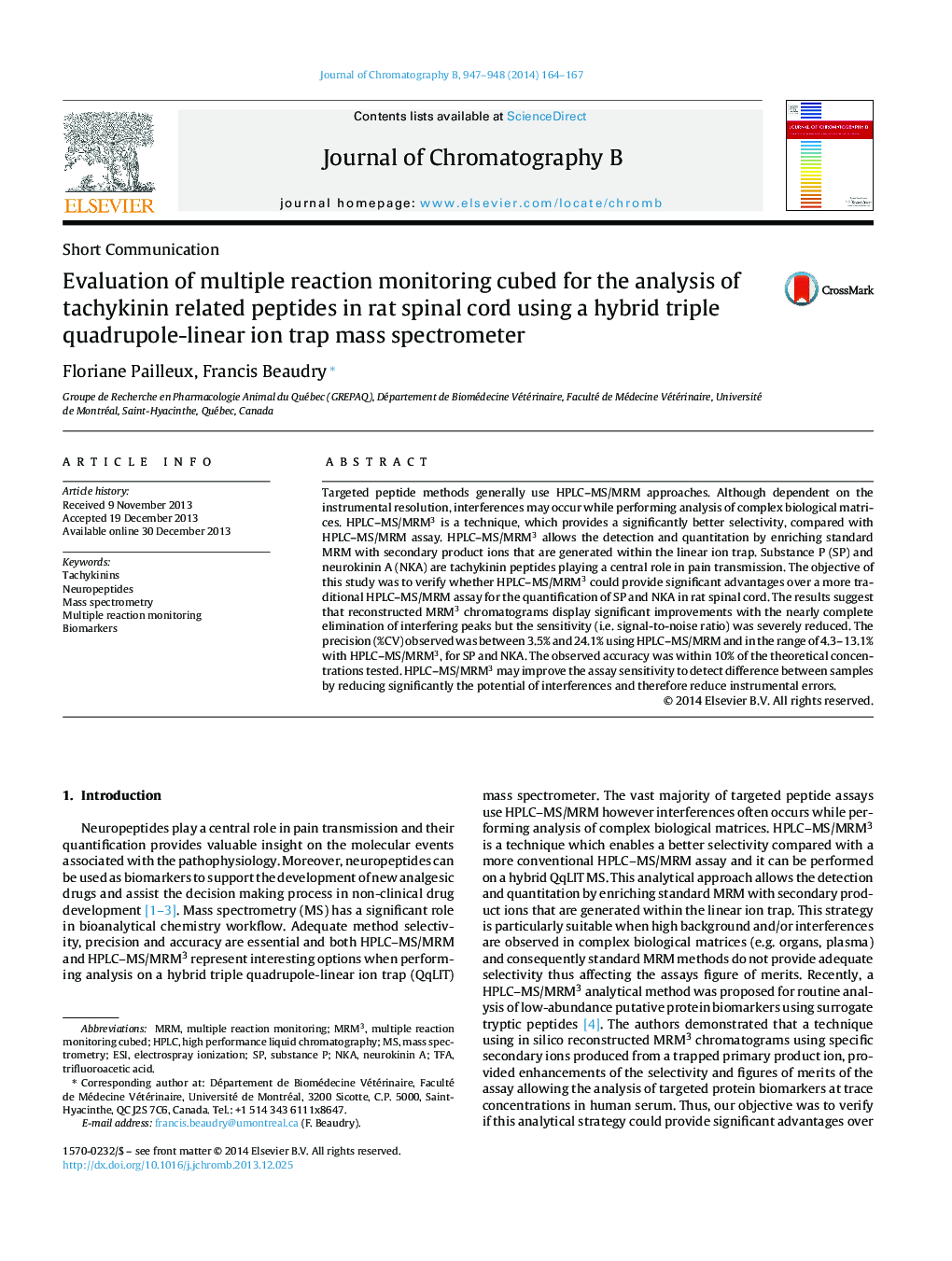| کد مقاله | کد نشریه | سال انتشار | مقاله انگلیسی | نسخه تمام متن |
|---|---|---|---|---|
| 1212865 | 1494091 | 2014 | 4 صفحه PDF | دانلود رایگان |
• We developed a new precise, accurate and selective method for the quantification of tachykinin related peptides by HPLC–MS/MRM3.
• We show significant improvement in assay selectivity compared with HPLC–MS/MRM.
• We demonstrate an improvement of assay sensitivity for detecting differences between biological samples.
• We also show limitations including a significant reduction in sensitivity (ion count).
Targeted peptide methods generally use HPLC–MS/MRM approaches. Although dependent on the instrumental resolution, interferences may occur while performing analysis of complex biological matrices. HPLC–MS/MRM3 is a technique, which provides a significantly better selectivity, compared with HPLC–MS/MRM assay. HPLC–MS/MRM3 allows the detection and quantitation by enriching standard MRM with secondary product ions that are generated within the linear ion trap. Substance P (SP) and neurokinin A (NKA) are tachykinin peptides playing a central role in pain transmission. The objective of this study was to verify whether HPLC–MS/MRM3 could provide significant advantages over a more traditional HPLC–MS/MRM assay for the quantification of SP and NKA in rat spinal cord. The results suggest that reconstructed MRM3 chromatograms display significant improvements with the nearly complete elimination of interfering peaks but the sensitivity (i.e. signal-to-noise ratio) was severely reduced. The precision (%CV) observed was between 3.5% and 24.1% using HPLC–MS/MRM and in the range of 4.3–13.1% with HPLC–MS/MRM3, for SP and NKA. The observed accuracy was within 10% of the theoretical concentrations tested. HPLC–MS/MRM3 may improve the assay sensitivity to detect difference between samples by reducing significantly the potential of interferences and therefore reduce instrumental errors.
Journal: Journal of Chromatography B - Volumes 947–948, 1 February 2014, Pages 164–167
